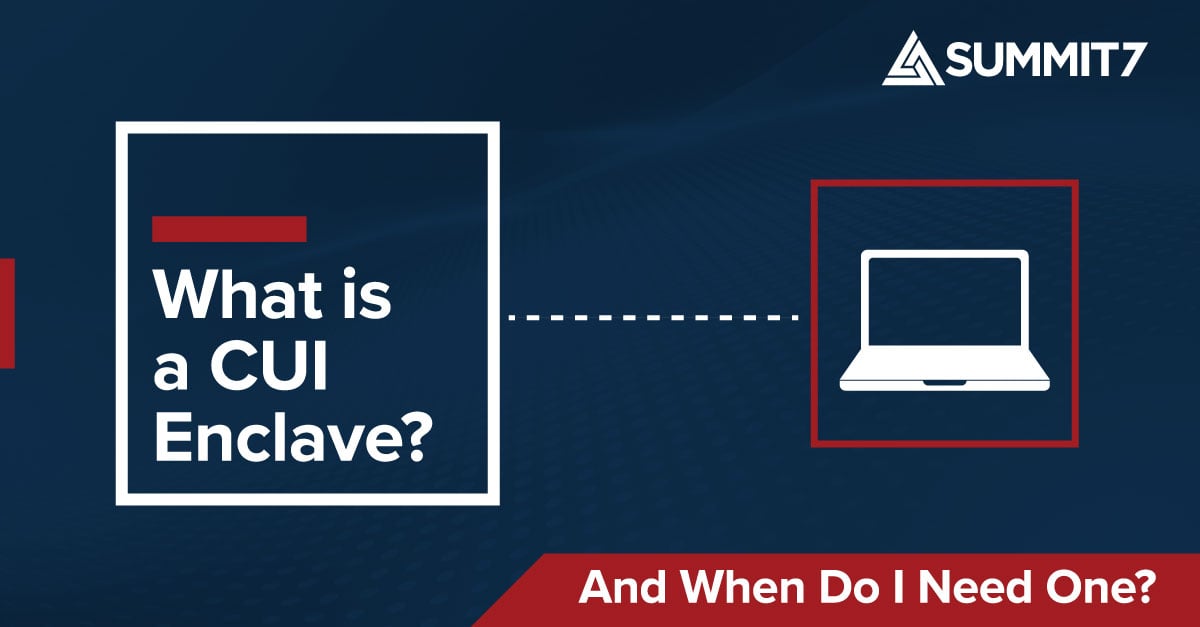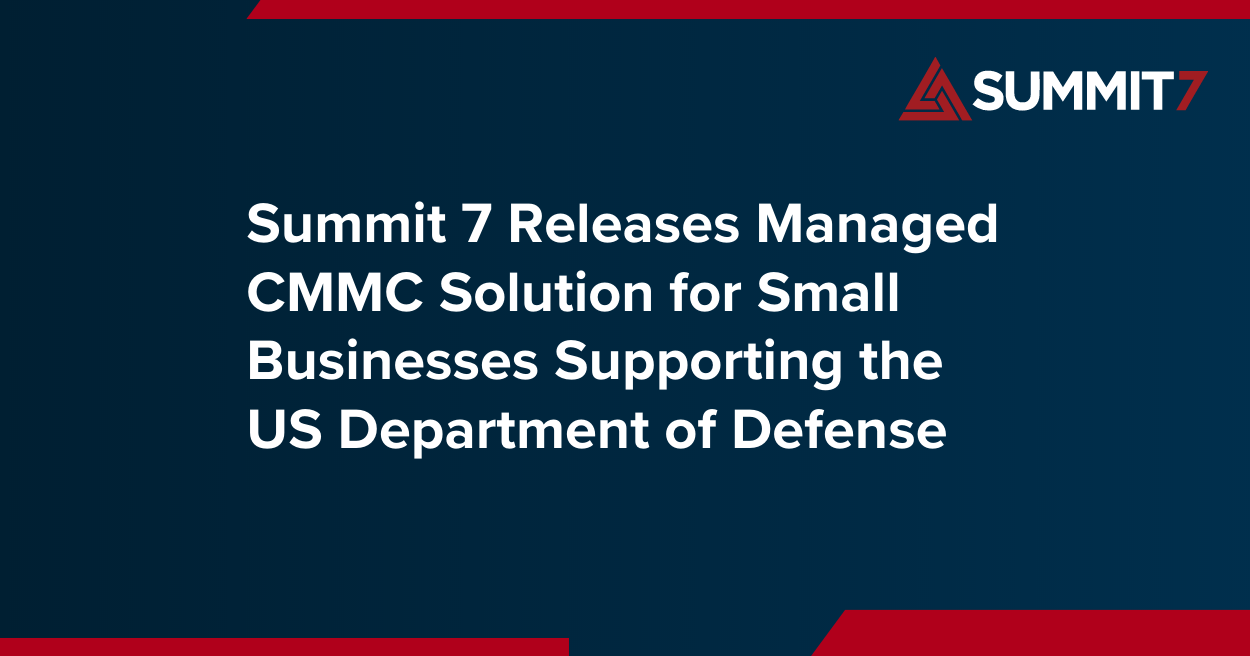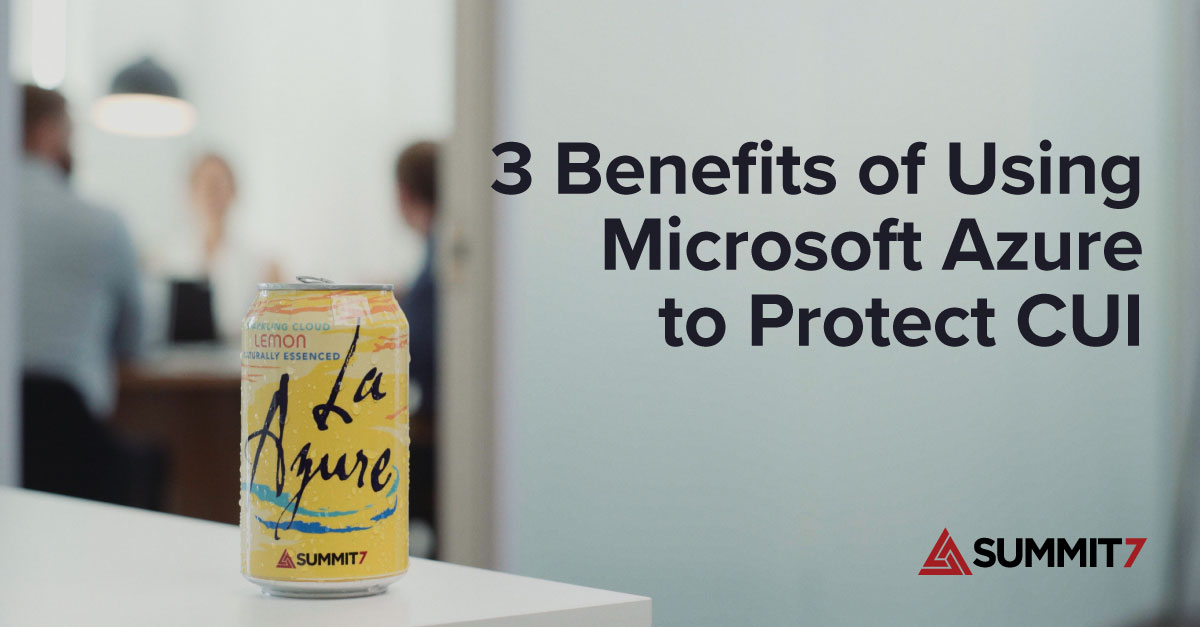Get CMMC Compliant ASAP (As Fast as 2 Months)
Learn how to achieve CMMC compliance in as little as two months using a Managed Enclave, simplifying your cybersecurity efforts and ensuring regulatory adherence.
What’s the Fastest Way to Become CMMC Compliant?
Become compliant in as little as 2 months* with a Managed Enclave: the quickest way to be confident that your organization is prepared for a CMMC Assessment.
TL;DR: A Managed Controlled Unclassified Information (CUI) Enclave is the fastest way to achieve CMMC compliance, potentially within just two months. It creates a controlled environment for sensitive data, simplifying compliance and reducing your cybersecurity risks. Plus, it allows you to start small and expand into an All-In approach later if needed.
.png?width=1769&height=1010&name=image%20(22).png)
With the CMMC Final Rule published organizations that have delayed starting their compliance journey are looking for a fast way to get started. With the right approach and guidance, becoming CMMC compliant in as little as two months is actually possible. This blog will guide you through how leveraging an enclave will expedite your compliance journey in this crucial moment where every month counts.
Check out our free webinar on CUI Enclaves below, which includes expert tips for discerning if an enclave is right for your organization + a live tutorial of what an enclave virtual desktop might look like running in your environment:
Why Choose a CUI Enclave? Start Small and Grow
A CUI Enclave is a segmentation of an organization's network or data that is intended to wall-off that network or database from all other networks or systems.
By creating this “CUI island,” if you will, you essentially create a smaller controlled environment for Controlled Unclassified Information (CUI). This allows you to simplify the compliance process and reduce the scope of your cybersecurity efforts.

You may not know the full extent of your CUI, but you are aware of its presence and your contractual obligations. By creating an enclave, you can establish a compliant environment that meets these requirements.
As you identify more CUI, you can either bring additional systems into scope or move the data into the enclave for processing.
The enclave provides a solid compliance foundation to build upon. Build a compliant beachhead, then land and expand.
After building your compliant beachhead, you can expand the enclave to accommodate more contracts and systems, gradually building out the environment rather than going all-in from the get-go, which requires much more time.
A CUI Enclave is an Easier and Cost Effective CMMC Solution
1. How is a CUI Enclave Easier?
The tighter the boundary and the more limited the number of assets (systems) and scope, the easier and less complex the assessment will be. This is especially true for a virtualized enclave, which we frequently use. Having those systems in the cloud, with Microsoft managing much of the responsibility, simplifies your job even further.
One of the biggest frustrations for an IT admin, or anyone we talk with about implementing comprehensive changes, is dealing with the frustration of the rest of the company.
Your team has to significantly shift how they do things once they’re in a compliant environment. When you're transitioning off non-compliant systems, users accustomed to the old ways can feel disoriented. It's a classic "who moved my cheese" scenario.

As an IT person, you want to minimize this disruption.
Starting with an enclave and focusing on specific users and systems is a great initial step. Employees can be disrupted when their system shifts and they feel that they can't do their jobs properly – especially if their work doesn’t actually touch CUI.
With a CUI Enclave, you’re limiting the scope of migration to only a smaller segment of your organization working with CUI.
2. How is a CUI Enclave Cost Effective?
The smaller the footprint, the easier the assessment and cost management. For organizations with a small CUI footprint, it's crucial to keep that footprint small, especially if you're not generating significant revenue from defense-related work.
The enclave approach will save money in the long term. You'll maintain productivity in that environment without affecting the commercial side of your business, resulting in a lower cost of entry. We offer aggressive pricing for small businesses, since we know that CMMC is placing the biggest challenge on their shoulders.
Hosted Vs. Managed Enclaves: Not All CUI Enclaves Are Created Equal
There are two types of enclaves: a hosted enclave where a 3rd party vendor owns the physical hardware, potential software licenses, etc., and a managed enclave where you own the hardware and software but a vendor helps you set up and manage it.
.png?width=4499&height=1809&name=why%20use%20a%20managed%20enclave_1@4x%20(1).png)
What are the Benefits of a Managed Enclave?
- With Summit 7’s Managed Enclave, you would buy the Microsoft 365 GCC High Licensing and Azure Government Subscription from us, but you own them: they are in your company's name. If something were to happen, all of your data and systems are still there - we're just not supporting the environment anymore. You always retain access to your data even after support has ended. We're not going to hold your data hostage. We can't because it's your data and it's your tenant.
- You own the M365 tenant and it's easy to scale up and down on demand.
- Microsoft is a FedRAMP High environment.
- It’s easy to extend your boundary to on-premise if needed to what we call a hybrid enclave, and eventually scale up to go All-In where your whole organization is in scope. A Managed Enclave allows you can extend to things like printers and other physical systems.
- Summit 7 and Microsoft 365 GCC is supported by all US persons. If you're dealing with ITAR data export controls, that requires you to make sure that the people staffing and supporting this environment, both at a data center level and at a support level, are all US persons.
- Our Managed Enclaves are supported 24x7 with our Guardian MSP and Vigilance MSSP services.
- We provide Guardian (MSP) and Vigilance (MSSP) clients with a tailored Shared Responsibility Matrix (SRM) to the environment paired with that RACI matrix to ensure all parties know who is responsible for which NIST 800-171 security controls.
What Are the Downfalls of a Hosted Enclave?
- Since your vendor owns the hardware, it's hard to scale on demand. Some of the hosted enclaves don't think that they're a data center. DFARS 7010 calls out some of the availability of on-demand resourcing. Many Hosted Enclaves do a work around this on-demand resourcing requirements and require you to submit a ticket. So, let's say you win a new contract and need to scale very quickly: it's going to take a while. You will have to submit a ticket and hope that they can buy the hardware to scale you as you scale your employees.
- You don't know if they can handle that your needs: If they have to go out and buy new servers to support you that could be weeks or months before they can meet your specific need. This is not an issue with Microsoft because they have datacenters ready all across the United States.
- Vendors are required to meet FedRAMP moderate or equivalency if they're claiming to be a SaaS or being some sort of data center service.
- It's hard to get your data out if you decide to break up with them - email, files, etc.
- It’s difficult to extend your boundary for on-premise systems. You want to have a solution that can grow with you. Let’s say “Joe” all of a sudden has to print CUI, you can enable that quickly with a Managed Enclave not so much with a “Hosted” enclave.
- You may have a non-existent or convoluted Shared Responsibility Model (SRM) since hosted enclaves are operating as a sort of pseudo data center.
Who Shouldn’t Choose a Managed Enclave?
Typically, we find that enclaves are an excellent initial solution if the threshold is about 15% or less of the company accessing CUI. Consider the cost of implementation and using the environment, and balance that with factors like how much revenue you're generating from CUI-related contracts and how many users will be affected from a productivity standpoint.

If you're a dedicated defense contractor with all employees working on defense projects, creating an enclave might be challenging. You might end up integrating the entire organization into the scope rather quickly.
If 90% of your work is for the DoD, this might not be for you. If that’s you, we recommend our All-In Solution.
Don’t Be Fooled: Trust the Experts for a Faster Solution
Achieving CMMC compliance in two months is ambitious but feasible with a focused and strategic approach. By leveraging an enclave and following a structured implementation plan, you can secure your CUI, meet regulatory requirements, and protect your organization from cyber threats. You don’t have to sacrifice cost or risk to get started.

Fill out the form below and find out how you can significantly streamline your compliance journey today.
*Timelines will vary for each organization according to scope and complexity. This is the fastest that Summit 7 is currently seeing Enclaves setup for organizations, and while we guarantee efficiency, we cannot accurately provide an estimated timeline until learning more about your goals and environment.


